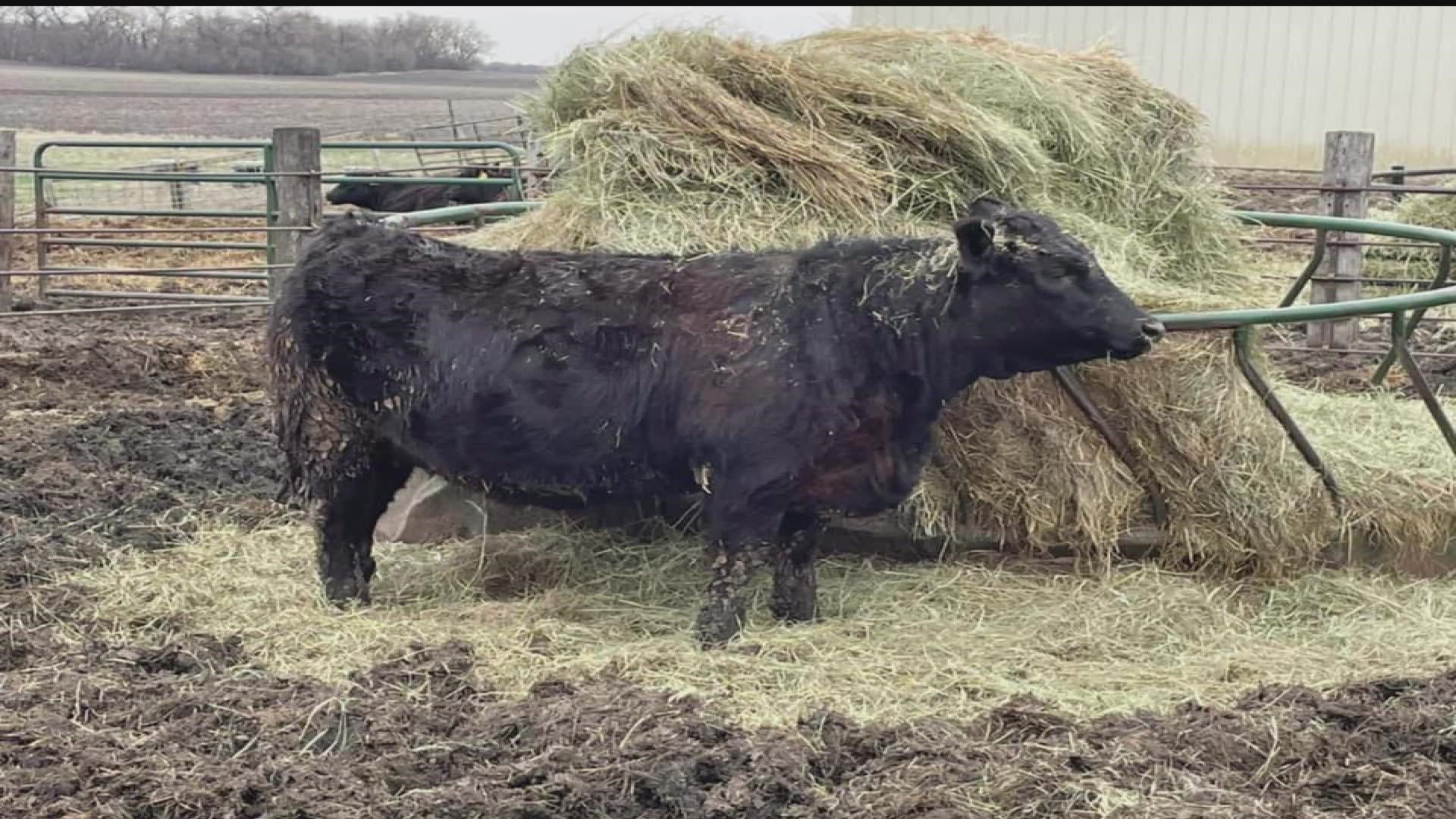ST PAUL, Minn. — Seven months have gone by since Gov. Walz stood in a Dakota County farmyard and called on lawmakers to pass a $10 million drought relief package for cattle producers and specialty vegetable farmers.
Only a month earlier, in mid-August, a record 90% of the state was in severe drought. Pastures dried up quickly, forage crops needed for winter were lost and cattle producers took on heavy losses buying hay. Some sold off herds or left the business completely.
But there's still no agreement between the DFL-controlled House and GOP-controlled Senate on how to deliver that assistance.
Cattle producers who gathered on the Minnesota State Capitol lawn Thursday said the relief package will help those who endured huge expenses surviving the drought.
"The drought this past year was an absolute nightmare for cattle producers across the state, especially the northern two-thirds of the state," Grant Breitkreutz, who raises cattle with his wife Dawn near Redwood Falls and heads the Minnesota State Cattlemen's Association, told KARE.
"Cattle operations in Minnesota and across the nation, we don’t have insurance for production, or loss of forage production. There's a little bit of government assistance that comes to buy hay, but there’s no hay to be bought in the upper Midwest or Canada."
Breitkreutz said thousands of cows were moved out of the state last summer due to lack of feed, and the feed put away for winter didn't stretch as far as expected because of extreme cold.
The MSCA set up grills in front of the capitol and served beef tenderloin medallions to lawmakers, staff, lobbyists and others. They wanted to make sure legislators don't forget about an industry that employs tens of thousands of Minnesotans and has a $4.9 billion economic impact.
"It’s great opportunity for us to meet our representatives and work with those who maybe aren’t directly involved agriculture every day," Mark Schoenfeld, who raises cattle and lambs with his wife Kami west of Montevideo, explained.
"When we get into drought situations, particularly in the beef cattle industry, it’s not just that we lose our pastures. It affects our hay ground and the value of hay we use and feed cattle through the winter."
State and federal authorities temporarily relaxed some rules to allow grazing on public lands at the height of the drought. Ranchers also incurred considerable costs transporting animals to places where they could graze and hauling water in streams and wells started to go dry.
The House bill would spend a $5.1 million on aid, with a maximum of $10,000 available per farmer. It also includes $13 million for the Department of Natural Resources to replace trees lost in the drought.
The Senate bill has $10 million in relief, with up to $5,000 available for each farmer, but restricted to areas the USDA declared as primary natural disaster areas. The Senate bill includes no money for the DNR.
In his presentation to the House Agriculture Committee in October, Agriculture Commissioner Thom Petersen said time was of the essence.
"Waiting until the 2022 regular session to pass funding will force Minnesota farmers to make more difficult decisions," Petersen remarked.
"Each passing week results in another producer making the difficult decision to leave farming. This drought package will not make farmers whole again; however, it will provide critical relief and bridge the gap when other resources come up short."
Watch the latest political coverage from the Land of 10,000 Lakes in our YouTube playlist:

